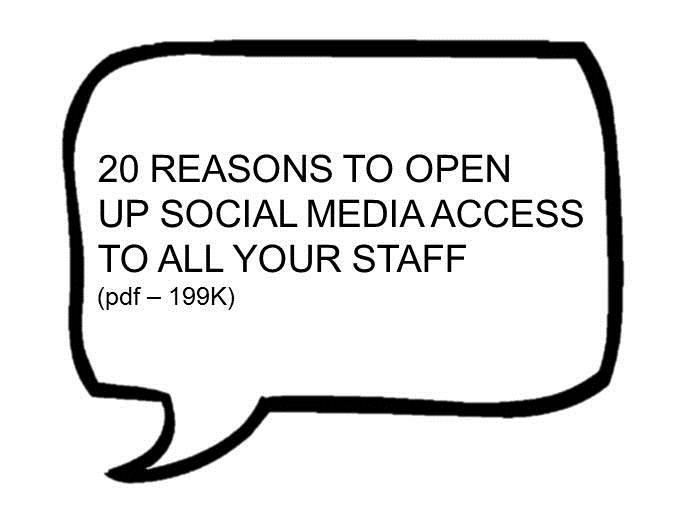 Monday, October 5, 2015
Monday, October 5, 2015 an ever updated video skills for comms resource page
 As video grows in importance there's an ever changing debate about the role it will take and how comms people can use it. We’re launching this page as a place to make sense of it all which we’ll regularly update.
As video grows in importance there's an ever changing debate about the role it will take and how comms people can use it. We’re launching this page as a place to make sense of it all which we’ll regularly update.
Last update: February 16.
by Dan Slee
There’s no question that video is making a profound mark on communications.
While people are devouring video content on their smartphones most organisations are not even out of the starting blocks.
A few years ago, getting video onto the social web meant uploading to YouTube. Today, you can upload to YouTube + Facebook + Instagram + Twitter + Vine + Snapchat + Periscope + Meercat and a range of others.
We’ve collected together some resources that we think you’ll find helpful. We’ve put them into loosely into examples, strategy and tactics and as things develop we may change things around.
We've also got some Essential Video Skills for Comms workshops with Steven Davies. You can find more information and book here.
Examples
Info & advice from @NHSEngland to help you #StayWellThisWinter #healthybrum pic.twitter.com/PhO7eVY3Bu
— Healthy Brum (@healthybrum) December 10, 2015
Magneto blog has this set of realistic-looking charity films.
NEW: South Cambridgeshire Council shot this seasonal video which was picked-up by the local media and others.
Cracking use of #video. Staff @CV_UHB read an anonymous 'thank you' card to A&E staff: https://t.co/Zi39UBcMor
— Dan Slee (@danslee) December 22, 2015
NEW: Kent Fire & Rescue used Star Wars for inspiration for a fire safety video as this post from Mark Roberts shows.
NEW: Shropshire Council posted a video to YouTube to help their budget consultation.
We’ve pulled together six examples of short videos that work over on the comms2point0 blog.
Mike Rawlins who is press officer for RNLI MacDuff in Scotland has blogged about how releasing less than 30 seconds of raw footage worked for them.
Strategy
Why comms people need to take video seriously from a comms perspective is blogged by Dan Slee on comms2point0.
Else Kramer's slideshare Show Don't Tell: The Rise of Visual on Social Media is an absolute keeper.
Video is getting bigger and is going to be 69 per cent of the internet by 2017, say Cisco.
Have a fearless attitude in how you approach. It’s fine to make a few mistakes and learn from them, says Steven Davies on comms2point0.
A post on how the John Lewis Christmas ad while a TV ad could be found on social media and across other channels by Dan Slee on comms2point0.
Even BBC journalists have been asked to make shorter video content.
Ofcom’s 2015 Communications market report gives comprehensive stats on the role video is playing in 2015. A quick summary: 66 per cent of UK adults now have a smartphone and 42 per cent are watching short video - that’s twice as many who watch TV shows. More here.
Facebook or YouTube? Or both?
Have a strategy of uploading to Facebook as well as to the established YouTube, says Dan Slee on comms2point0. It’s a view supported with data by local government comms officer Albert Freeman on his blog.
Marketing vlogger Tara Hunt weights up both and lands on the side of... post to both. Her video is a considered four minutes or so well spent...
Applications to help you shoot video
For post production - that’s editing to laymen - then there are three worth considering. For android kinemaster does the job from the Google Play store but charges about £3 a month to remove their watermark. For iphone, imovie from the app store looks like market leader. Both don’t do as much as Adobe Premier which works on a PC or laptop.
Learning to shoot video
Local government officer Rob McCleary has blogged about what he learned at a video skills workshop where he shot video on his smartphone. Kacem Jlidi offers 12 things he learned at a video making workshop.
Basic tips on shooting an interview on the carabiner comms blog.
It is possible to make a film that looks good with some advanced planning, the Alive With Ideas blog says.
For a more news-style the Mulin blog have written about the five shot technique on their blog.
If an interviewee is nervous this post on live and social may be helpful. It gives tips for the person being interviewed.
BBC College is a great resource and has a section on video journalism using your smartphone. It also has some good advice here on shooting video with your smartphone.
Helpful Technology’s Steph Gray looks at six styles of video that work in the public sector.
YouTube video
YouTube and those who have developed channels there have not reacted well to the challenge. One vlogger Hank Green accused Facebook of ‘lies, cheating and theft’ accusing it of being slow to take down pirated content and counting a view at just five seconds as opposed to 30 seconds on YouTube. As with anything with the social web, it’s hard to piece together exact stats.
YouTube remains huge. It’s the second largest search engine in the world with three billion searches a month.
There’s no shortage of stats on YouTube here. In fact, there’s 120.
New app Live in Five sees you broadcast live to YouTube.
Instagram video
Instagram itself has a help page for creating video to post on its site.
Mashable has a guide for creating instagram video in seven steps.
Facebook video
However, Facebook as the world’s largest social media site has thrown its clout behind video. Inspired by a Harry Potter film they invented auto-opening videos as you scroll through your timeline.
Erin Griffith in her ‘Fortune’ piece ‘How Facebook’s Video Traffic Explosion is Shaking Up the advertising world’ runs through the scientific arguments. Facebook has become a place where its worth uploading video directly. In February 70 per cent of uploads were direct to Facebook - almost three times the number within 12-months. Why? Griffin says that video is a way to breathe life into your withering Facebook page. The secretive Facebook algorithm will show around four per cent of followers your text update, 14 per cent your picture and up to 35 per cent your video. So, video it is.
And the story of car maker Lexus making 1,000 different versions of the same content and used Facebook’s demographics to distribute them is mind-blowing. So a male tech-loving car enthusiast saw a different version to the female from Chicago who loves travel.
Facebook does better than YouTube in keeping and holding the viewers’ attention. Almost 60 per cent will ‘complete’ a video. This is almost twice that of YouTube. However, videos posted to Facebook tend to be shorter at 44 seconds.
Facebook is also pioneering immersive video where you can look up, down and around. They are calling it 360 degree video.
Facebook are also giving you a choice of related videos in a carousel option so you can spend more time in and around the subject.
Twitter video
Tips on using video effectively on Twitter by socialmediatoday.com.
Twitter’s own guide to making videos on the site is a good starting point.
Vine video
Local government blogger Albert Freeman has blogged on using the six-second looping video app.
Mashable have produced a guide for making Vine videos.
London Fire Brigade produced this handy Vine that's a game to encourage you to press the smoke detector button.
Periscope and Meerkat video
Both Periscope and Meerkat do similar things. They livestream via Twitter. However, as Periscope is owned by Twitter the smart money is backing that to come out on top.
Russ Gethings rates Periscope and Meerkat on the comms2point0 blog.
Five tips on using Periscope to live stream from the hubspot blog.
When to livestream and when not to is tackled on this Albert Freeman post on Periscope.
Periscope has been used by eyewitnesses to terror incidents including a bomb blast in Bangladesh. Be careful looking at this. As this Medium post by Pete Brown Eyewitness Media Hub says you can’t ever unsee things.
Immersive video
Immersive video is video that uses technology like google cardboard to allow you to almost stepopo into the picture. Virtual Reality is nothing new but technology has developed enough to allow filmmakers and journalists to use it to tell stories powerfully.
Buzzfeed on the rise of immersive video in news.
Facebook are selling immersive video ads. This is significant.
New York Times have released some powerful new films as part of a major push. Is this the moment it has gone mainstream?
Dan Slee is co-creator of comms2point0.
- We run Essential Video Skills for Comms workshops with Steven Davies. For more information and to book click here.
 video
video 














Reader Comments (1)
The best way to boost 2d cartoon video production is to get the best explainer video services. They not only help you to create your 2d animated video but also help to boost video production.